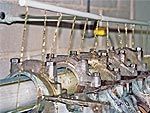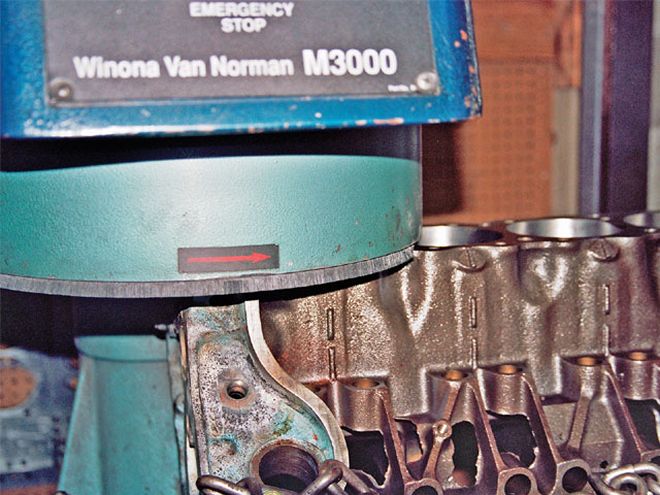

To the casual observer, it appears that Hollywood has found favor with a new type of TV format: the reality show. I would assume this is in contrast to a fabricated show with a script and paid actors. Within the car hobby, HPP is one of the few reality magazines. The pages are not filled with outlandish claims driven by advertising dollars or text that alludes to our editors having extraordinary success in getting Pontiacs to go fast and make big power with a simple turn of a screw and a few bolt-on parts. Our success is based on the fact that we live in the Pontiac world, and more often than not, it leads to the same level of frustration that you, our readers, endure. Technical stories and engine builds in some publications seem to go off without a hitch, while in contrast, we find every rusted bolt and cracked engine block. No, HPP is not the home of the hard-luck editors, we just report the truth as it appears without candy coating.
With that established, this article and thus, the author's assignment, was never supposed to exist. It's the direct byproduct of a series of events that will be all too familiar to anyone involved in this hobby.
How It All Began
As EFI has become more popular in recent years, our interest was piqued when HPP was contacted by Mass-Flo about its auto-tuning EFI system for PMD cars. Though Third- and Fourth-Generation Firebirds were factory-equipped with EFI, we are all well aware that the Chevy V-8 that was under the hood shared no DNA with a true Poncho powerplant. This left the question, would Pontiac engine technology respond as favorably to electronic engine controls as those from the other divisions of GM? To this cause, HPP technical contributor and '74 SD-455 Trans-Am owner Melvin Benzaquen volunteered his car as a testbed.
The original concept was to chassis-dyno the Firebird with the stock Rochester-carb and cast-iron-intake induction system and then switch over to the EFI and retest. This would provide an A-to-B comparison of not only the power and torque, but driveability and fuel economy as well. Finally, a Pontiac EFI story that would have relevance to a hobbyist with a pure-Pontiac engine. Simple, right?
For the chassis-dyno testing, we enlisted the help of Bob Ida of Ida Automotive in Morganville, New Jersey. Bob has a long history of tuning and drag racing, and over the years, has been a valuable asset to HPP, offering his knowledge and test equipment. The game plan was to dyno the SD at Ida, go back to Melvin's shop and install the EFI system, then go back to Ida for a retest. But first you need to know a little history about the engine in our subject T/A.
Based on Melvin's own admission, the car has been a hard-luck story. It has endured multiple "one-in-a-million" events but is still very much intact. During a restoration project, the engine was pulled and sent to a machine shop that claimed to wave the Pontiac flag. Almost one year later it was pronounced completely rebuilt and returned with a hefty price tag. Much to Melvin's dismay, it lasted 25 miles before a rod knock appeared and the cherry-picker hook was back over the intake manifold. The same engine builder took the Super Duty back and gladly made the necessary repairs in short order: six months instead of a year. Installed in the T/A and only driven on the street for a total of 250 miles, it sounded good and seemed to run well for a mostly stock rebuild. Then we went to the dyno.
Coming off the trailer, the T/A sounded tough, and it was hard to believe you could actually go to a dealership and order a new car with this internal combustion music emanating from the tailpipes. Strapped on the dyno, as was usual, we all took a guess at what the power would be. Since it was a complete stock rebuild except for the addition of an R/A-IV-spec cam and was factory-rated at 290 hp at the flywheel, anything north of 232 hp at the ground would suggest better than stock power output. This was based on a driveline loss of around 20 percent. It would be interesting to see if the cam choice increased power substantially.
After a few part-throttle warm-up runs, the first full pull was made. Ida's computer showed 253 hp or about 304 ponies at the crankshaft. Not bad: a little more than Pontiac rated the engine for in 1974. Since it's proper dyno-test procedure to do at least three runs to collect accurate data, we were on the way to Run 2. With Melvin at the wheel and Bob on the dyno controls, the Pontiac proved a worthy performer with exactly the same numbers. After a brief cooldown for repeatability, we all believed that one more run would provide an accurate baseline for our test. About halfway through Run 3, a severe rod knock surfaced and the test was aborted to prevent hurting the engine. With disgust, Melvin calmly said, "Here we go again."
Doing It Right
I don't know if the number three has any significance to this Firebird. It blew up on the third dyno pull and now needs to be rebuilt for the third time. But we can say with confidence that the bad engine luck ended when the 455 was delivered to Bob and Craig Wise of RaceKrafters Automotive Machine in Lancaster, Pennsylvania. No stranger to the pages of HPP or Pontiac engines, the Wise brothers not only know how to make power with a Pontiac, they know how to make it last.
Upon disassembly and inspection, it was realized that the so-called machine shop was not worthy to rebuild a lawn mower let alone a rare and honorable Super Duty. Mickey Mouse machine procedures, a lack of measuring, and no concern for attention to detail was a sure recipe for catastrophic engine failure. After Bob pulled the engine down, he was surprised it had lasted 250 miles and two dyno pulls. Though many new parts were going to be required, there wasn't much there that couldn't be fixed by the skills of the crew at RaceKrafters.
If there is any message to take home here, it is that when doing engine work, there are no corners that can be cut or places to save money. In Melvin's case, he was not interested in trying to do the job on the cheap; he was a victim of a machine shop that could talk the talk but not walk the walk. For this reason, Part I of the series is dedicated to understanding the necessary procedures to properly rebuild a Pontiac engine.
All too often, a rebuild consists of a quick hone job with new rings and bearings. That may be fine in some cases, but that can only be determined after a complete teardown and measuring session. The problem with doing it right is that the initial cost is substantially more than a ring-and-bearing job. But, in the long run, it's always more economical to do any job right the first time instead of doing it over again.
Since the story is best told with pictures, follow along as HPP and RaceKrafters do this SD-455 proud. Please note: All specifications, blueprint data, and parts identification will be revealed in Part II.

After the disassembly, cleaning, and inspection, Craig prepared to deck the engine block. This procedure is necessary because the cylinder-block deck surface sometimes develops irregularities that can cause compression and water leaks. The flatness of the block deck can be easily checked by using a straightedge and a feeler gauge. If the maximum deformation at any point is greater than 0.004 inch, the block needs resurfacing.
The term decking is used for the machine process that trues the head-gasket surface of the block. Most of the time, the objective of decking is to end up with a flat surface cut that is parallel with the centerline of the crankshaft and at the correct angle to the cylinder bores. Another use for this procedure when building a V-8 is to make sure the surface of each deck is the same distance from the crankshaft. Decking can also be used to increase the compression ratio by reducing the quench volume and bringing the piston closer to the top of the bore when at TDC. Our SD-455 block was decked 0.020.
When the crown of the piston is level with the deck, it is referred to as a "0-deck engine." A positive deck has the piston come slightly out of the bore when at TDC. Most Pontiac engines left the factory with a negative deck height. This means the piston crown never reached the top of the bore.
When metal is removed from the block or heads on a V-type engine, the heads will be positioned closer to the crankshaft. This will result in either machining the intake side of the cylinder head or the manifold itself for proper fitment.